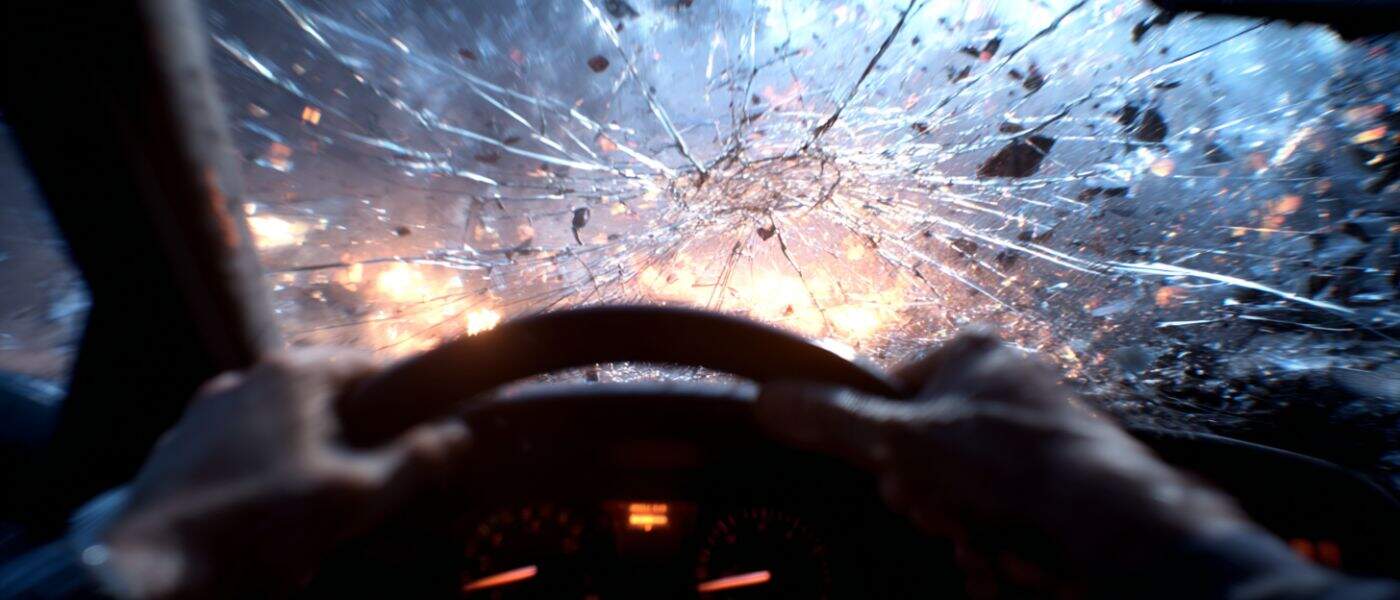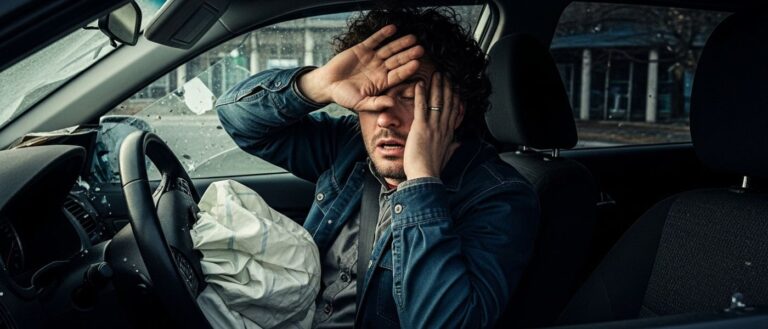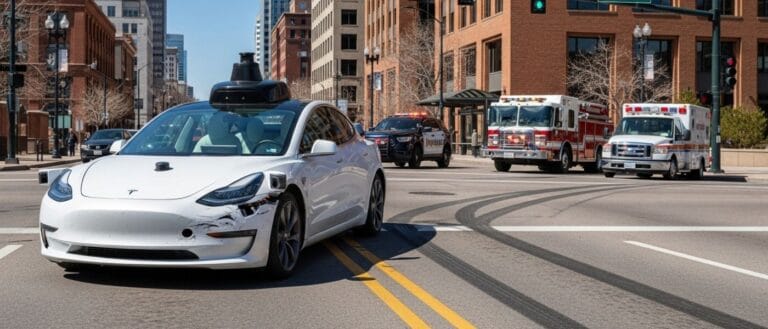What are the three types of collisions in a car crash?
Every car crash causes three types of collisions: the vehicle collision, the human collision, and the internal collision. These stages happen in quick order, but each one has a different effect on people in the vehicle. Most of us just picture the car hitting something, but honestly, there’s a lot more going on inside that can make all the difference for safety and injuries.
When a crash happens, the car hits an object, but the people inside keep moving until they hit something—maybe a seatbelt, airbag, dashboard, or window. And then, even after the body stops, organs inside can slam into bones or other tissue. Getting a grip on these three collisions really helps explain why injuries happen and why seatbelts and airbags aren’t just optional extras.
Overview of Collision Types
A car accident isn’t just about metal crunching. There are three main collisions in every crash, and each one brings its own set of risks.
Vehicle Collision
The vehicle collision is the first thing that happens. The car hits something—a tree, another car, a wall. The front or side of the vehicle takes the brunt of the force.
Modern cars have crumple zones and airbags that are supposed to soak up some of that energy. Still, a sudden stop can do a lot of damage, especially at higher speeds.
Damage to the car can be anything from a minor dent to a total wreck. Sometimes, after a bad crash, you can barely recognize the vehicle.
The way the car hits—head-on, side, or rear-end—changes the risks for everyone inside. Safety features help, but they can’t always protect you in every kind of crash.
Human Collision
After the car stops, the human collision comes next. The people inside keep moving at the same speed the car was going, until they’re stopped by something inside the car—usually the seatbelt, maybe the airbag, sometimes the dashboard or window.
Seatbelts are designed to slow you down more gently, spreading the force across your chest and hips. Without a seatbelt, you’re way more likely to slam into the steering wheel, windshield, or even get thrown out of the car.
Bruises, broken bones, and head injuries are all pretty common at this stage. Back seat passengers aren’t off the hook either, especially if they skip the seatbelt.
The direction and force of the crash changes where and how people get hurt. Using safety gear properly can really lower the risk.
Internal Collision
The internal collision is the sneakiest. After the body stops, the organs inside—like the brain, heart, or lungs—keep moving and can hit bones or other tissues. This all happens inside, so you might not see anything right away.
Organs can get bruised or start bleeding. The brain, for instance, can slam against the inside of the skull, causing a concussion or worse brain injuries.
Internal injuries are tricky because they’re not always obvious. Sometimes, the real damage only shows up hours or days later.
Vehicle Collisions: Mechanics and Impact
A vehicle collision is basically when your car hits something—another car, a tree, a guardrail, you name it. The forces involved are wild: movement, energy, and a sudden stop that messes up both the car and the people inside.
How Vehicle Collisions Occur
It all starts when a moving car smacks into something. Could be another car, a barrier, or even a mailbox. The impact causes the car to slow down or stop in an instant.
Cars today have crumple zones that sort of fold up to absorb energy. Airbags and seatbelts help, but they can’t make the force disappear.
Common causes of vehicle collisions:
- Losing control—speed, bad weather, you know the drill
- Not seeing other traffic
- Something going wrong with the car
When a crash happens, all that energy has to go somewhere. Most of it gets spent bending the car and whatever it hits.
Role of Inertia and Kinetic Energy
Inertia is what keeps everything moving until something makes it stop. So, in a crash, the car, your coffee cup, and you—all keep moving at the same speed until something stops you.
Key terms:
- Inertia: The stubbornness of objects to keep moving
- Kinetic energy: Basically, the energy of movement. It goes up with both mass and speed.
For example: If you’re going 50 km/h and hit a wall, the car stops, but you and everything inside want to keep going. That’s why seatbelts matter.
Kinetic energy doesn’t just vanish. Crumpling metal absorbs some, but the rest gets passed on to you and your stuff.
Newton’s Laws of Motion in Collisions
Newton’s First Law: Objects in motion stay in motion unless something makes them stop. In a crash, that “something” is the impact.
Newton’s Second Law: Force equals mass times acceleration. So, a heavier or faster car means a bigger hit.
Newton’s Third Law: For every action, there’s an equal and opposite reaction. When you crash, the object you hit pushes back just as hard.
Table: Newton’s Laws and Collisions
| Law | Role in Collision |
| First Law | Passengers keep moving |
| Second Law | Bigger mass or speed, bigger force |
| Third Law | Both car and object get hit |
Human Collisions: Injuries and Effects
When you’re in a crash, your body gets thrown forward and can hit all sorts of things inside the car. This can lead to obvious injuries—or sometimes stuff you won’t notice right away.
Common Injuries in Human Collisions
Human collisions can cause anything from mild scrapes to really serious injuries. Head injuries like concussions or traumatic brain injuries are common if your head hits the dashboard, window, or steering wheel.
Whiplash is another big one—your neck snaps forward and back, leaving you sore or unable to move much. Chest injuries can come from hitting the steering wheel or even from the seatbelt itself.
Broken glass or sharp metal can cause lacerations. Bones—arms, legs, ribs, pelvis—can break if they take a hard hit.
Some injuries need surgery or months of rehab. Getting checked out right away can really help with recovery.
Internal and External Trauma
There’s two main types of trauma here. External trauma is the stuff you can see—bruises, cuts, broken bones. Usually, these get treated quickly.
Internal trauma is trickier. Internal injuries might mean damage to organs like the liver, spleen, or lungs. The brain can also get rattled inside the skull, causing a brain injury.
Signs of internal trauma might not show up right away. Could take hours or even days. That’s why doctors keep an eye out. If left untreated, these injuries can get serious fast.
Role of Safety Measures in Reducing Harm
Seat belts, airbags, and headrests really do make a difference. Wearing a seatbelt keeps you from flying into the dashboard or out the window.
Headrests, if they’re set right, can stop your head from snapping back too far. Airbags help cushion the blow to your chest and head, lowering the odds of really bad injuries.
Even with all these features, you can still get hurt, but usually not as badly. Honestly, using them every time is just common sense.
Internal Collisions: Understanding Hidden Harm
Internal collisions are what happen inside your body during a crash. You might look fine on the outside, but inside, things can get serious—sometimes life-threatening.
How Internal Collisions Occur
So, the car stops, your body stops, but your organs? They keep moving, thanks to inertia. The brain can hit the skull, the heart can bump into the chest wall, and so on.
Ribs might crack, and sometimes broken bones actually puncture organs. Blood vessels like the abdominal aorta can tear, which is really dangerous. The spleen, liver, and kidneys are at risk, too.
Seat belts and airbags help, but they can’t always prevent these internal injuries. The force from a crash is just that strong sometimes.
Potential Life-Threatening Injuries
Internal bleeding is one of the scariest risks. You can’t always see it, but it can be fatal if not treated quickly. Symptoms might be pain, swelling, or even fainting.
A ruptured spleen is pretty common, especially in side impacts. A torn abdominal aorta is rare but almost always deadly. Broken ribs can poke holes in the lungs or other organs.
These injuries usually mean emergency surgery. If you’ve been in a bad crash, don’t brush it off just because you feel okay.
Long-Term Consequences
People who survive serious internal injuries sometimes deal with long-term health problems. For example, losing your spleen means you’re more likely to get infections. Damaged organs can cause pain or other issues for years.
Broken ribs might ache or limit movement for a while. Some folks end up with scar tissue or adhesions that mess with digestion or cause other problems down the road.
All this just goes to show—early treatment and follow-up care after a crash aren’t just nice to have. They’re crucial if you want the best shot at a full recovery.
Safety Measures and Injury Prevention
Wearing seatbelts, using the right car seats, and depending on modern vehicle safety features can really lower the risk of serious or fatal injuries in a crash. These measures protect the body during each stage of a collision and help reduce the impact forces passengers feel.
Importance of Seatbelts and Car Seats
Seatbelts are honestly one of the simplest, most effective ways to protect people in a crash. They keep you in place and prevent you from slamming into the inside of the car.
Kids need extra protection, so car seats and booster seats are made for their smaller size and weight. Picking the right car seat for a child’s age and size can make a huge difference. Safety experts say properly fitted seatbelts and car seats can cut the risk of death and serious injury by more than half.
A seatbelt should sit across your chest and hips—not your neck or stomach. It’s worth checking regularly to make sure car seats and boosters are tightly installed and haven’t expired.
Function of Airbags in Crashes
Airbags deploy in a split second during a collision, inflating to cushion the head and chest from hitting the steering wheel, dashboard, or windows. It’s wild how fast they work, honestly.
But airbags aren’t meant to work alone. They’re most effective with seatbelts because seatbelts keep you in the right spot for the airbag to actually help. Without a seatbelt, you might hit the airbag too hard and get hurt anyway.
Newer cars can have a bunch of airbags—front, side, even curtain airbags. Each one is there to protect different body parts and help in all sorts of crashes, not just head-on ones.
Reducing the Risk of Fatalities
Using all the safety features—seatbelts, car seats, airbags—really lowers your risk of dying or getting badly hurt. Even how you sit matters; being in the right position lets these devices do their job.
Tech keeps adding new layers of protection. Things like automatic emergency braking and blind spot warning can sometimes stop a crash before it happens or at least make it less severe. They’re not perfect, but they help.
It’s easy to forget, but regular maintenance matters too. If airbags or seatbelts aren’t working, they’re not going to help you when you need them most.
Legal and Financial Aftermath of Collisions
Car crashes can throw your life into chaos—legal messes, bills, missing work, property damage, you name it. The costs add up fast, and the choices can get overwhelming.
Medical Treatment and Expenses
Personal injury is common after a crash. Victims might need anything from emergency care to surgery or long-term rehab. Medical bills can pile up quickly, even if you’ve got insurance.
Some of the costs you might see include:
- Ambulance fees
- Emergency room visits
- Surgery
- Physical therapy
- Prescription medication
Bills for follow-up visits or long-term care can sneak up on you, too. Families often end up facing costs related to pain and suffering, especially if injuries stick around or make daily life harder. Sometimes medical care goes on for months or even years, especially after the worst accidents.
Compensation and Lost Wages
Missing work is almost inevitable after a crash, and lost wages can be a huge worry—especially if you’re the main provider. Insurance or lawsuit compensation is supposed to help fill that gap.
Things compensation might cover:
- Lost income
- Future earning potential
- Property damage
- Medical expenses
Some states let you claim for emotional distress, pain and suffering, or even wrongful death if someone was killed. It’s important to keep records of missed work and lost income—otherwise, it’s tough to prove your claim.
Legal Representation and Rights
Plenty of folks end up needing legal representation after a crash just to protect themselves. Lawyers can help with insurance claims, guide families through the process, and deal with negotiations that honestly get messy fast.
Legal help is especially important if there are serious injuries, fatalities, or disputes over fault. An attorney can push for fair compensation, whether it’s settled or goes to court. They’ll also explain your options and handle the paperwork for personal injury or wrongful death claims.
Other Types of Motor Vehicle Collisions
Not every accident is just car vs. car. Motorcycle crashes, and accidents involving buses or trucks, come with their own set of challenges and risks.
Motorcycle Accidents
Motorcycle accidents are almost always more dangerous for the rider. With no metal cage around you, the risks are higher—no way around it.
One of the biggest problems is other drivers just not seeing motorcycles. Left-turn crashes at intersections and lane changes are classic scenarios. Sometimes riders get serious injuries just from falling or sliding, even without colliding with another car.
Weather and road conditions don’t help. Rain, gravel, potholes—they all make riding riskier. Helmets and protective gear are a must, but they’re not a magic shield. Even a “minor” motorcycle accident can end with broken bones or head injuries.
Unique Risks in Different Vehicle Types
Large vehicles—think trucks or buses—bring their own set of headaches in a crash. Their sheer size and weight mean they need more room to stop, and honestly, when they hit something smaller, the results can be rough.
The height and length of these vehicles make underride accidents more likely, where a car can end up sliding under a truck or trailer. With buses and vans, there’s the added worry of more passengers, so one bad collision can impact a crowd.
SUVs and pickups? They’ve got a reputation for rolling over, especially in sharp turns or if they get hit from the side. Rollovers are scary—without seatbelts, people can get tossed around inside.
Electric and hybrid cars have their quirks too, mostly around battery fires if there’s a really bad crash. But, to be fair, those incidents aren’t all that common. Safety features like airbags, seatbelts, and tough frames help, but the risks really do hinge on what kind of vehicle you’re in.







